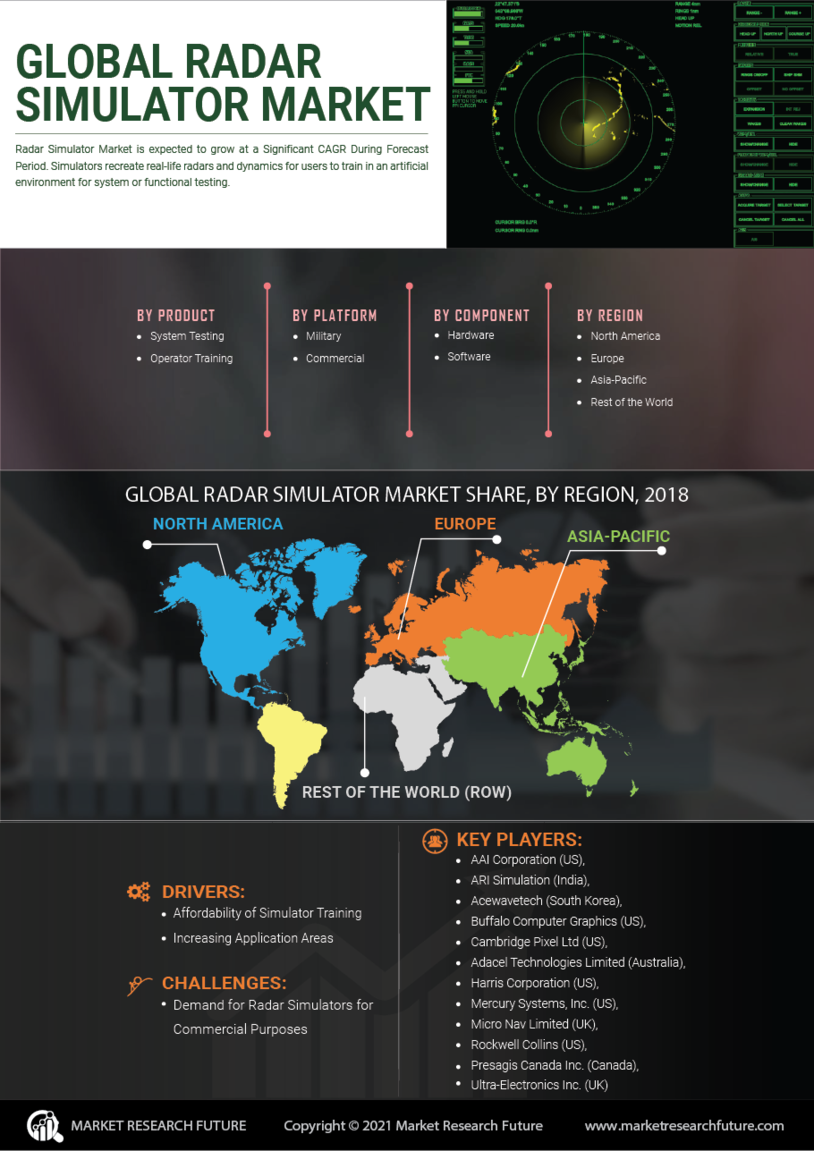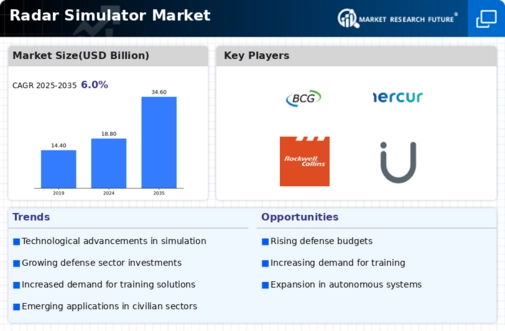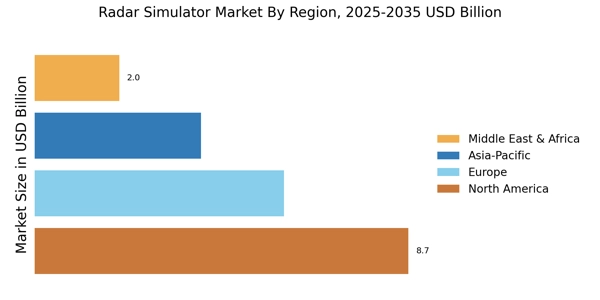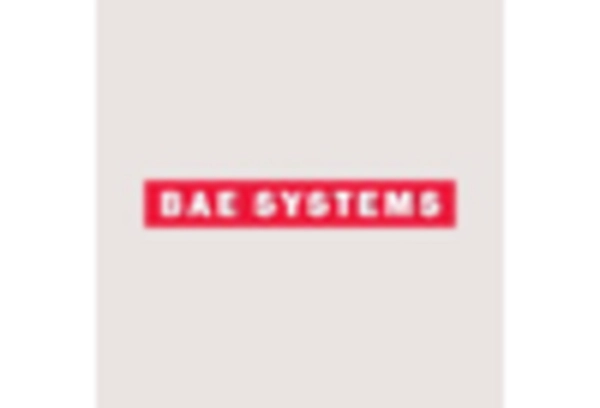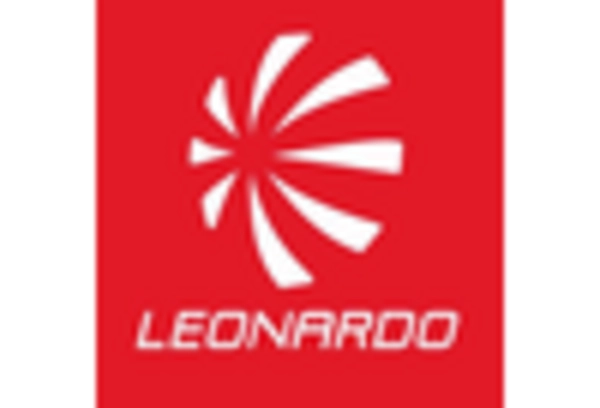Increasing Defense Budgets
The Radar Simulator Market is experiencing a notable surge due to increasing defense budgets across various nations. Governments are allocating substantial resources to enhance their military capabilities, which includes investing in advanced training systems. For instance, countries are focusing on developing sophisticated radar technologies to improve situational awareness and operational efficiency. This trend is reflected in the projected growth of the defense sector, with estimates suggesting a compound annual growth rate of around 3-5% over the next few years. Consequently, the demand for radar simulators, which provide realistic training environments, is likely to rise, thereby driving the market forward.
Emergence of Advanced Technologies
The Radar Simulator Market is being propelled by the emergence of advanced technologies such as augmented reality (AR) and virtual reality (VR). These technologies are revolutionizing the way training is conducted, offering immersive experiences that enhance learning outcomes. The integration of AR and VR into radar simulators allows for more interactive and engaging training sessions, which can lead to improved retention of skills and knowledge. As organizations seek to adopt these innovative solutions, the market for radar simulators is expected to witness substantial growth. Analysts predict that the incorporation of these technologies could increase the market size by approximately 20% over the next five years.
Expansion of Civil Aviation Sector
The Radar Simulator Market is benefiting from the expansion of the civil aviation sector, which is witnessing unprecedented growth. As air traffic increases, there is a heightened need for effective air traffic management and training solutions. Radar simulators play a crucial role in training air traffic controllers and pilots, providing them with the necessary skills to manage complex airspace scenarios. The civil aviation market is projected to grow at a CAGR of around 4-6% over the next decade, which is likely to drive the demand for radar simulators. This expansion not only enhances safety but also contributes to the overall growth of the radar simulator market.
Rising Importance of Cybersecurity
The Radar Simulator Market is increasingly influenced by the rising importance of cybersecurity in defense and aviation sectors. As threats evolve, there is a pressing need for training that encompasses not only traditional radar operations but also cybersecurity measures. Radar simulators are being adapted to include scenarios that address potential cyber threats, ensuring that personnel are well-prepared to handle such challenges. This shift is likely to drive demand for advanced radar simulation solutions that incorporate cybersecurity training modules. The market for cybersecurity training is expected to grow significantly, potentially reaching USD 30 billion by 2027, which could further enhance the radar simulator market.
Growing Demand for Training and Simulation
The Radar Simulator Market is significantly influenced by the growing demand for training and simulation solutions. As military and civilian sectors recognize the importance of realistic training environments, radar simulators are becoming essential tools. These simulators allow operators to practice in a controlled setting, enhancing their skills without the risks associated with live training. The market for training and simulation is projected to reach approximately USD 12 billion by 2026, indicating a robust growth trajectory. This increasing emphasis on effective training methodologies is likely to propel the demand for radar simulators, thereby contributing to the overall expansion of the market.
